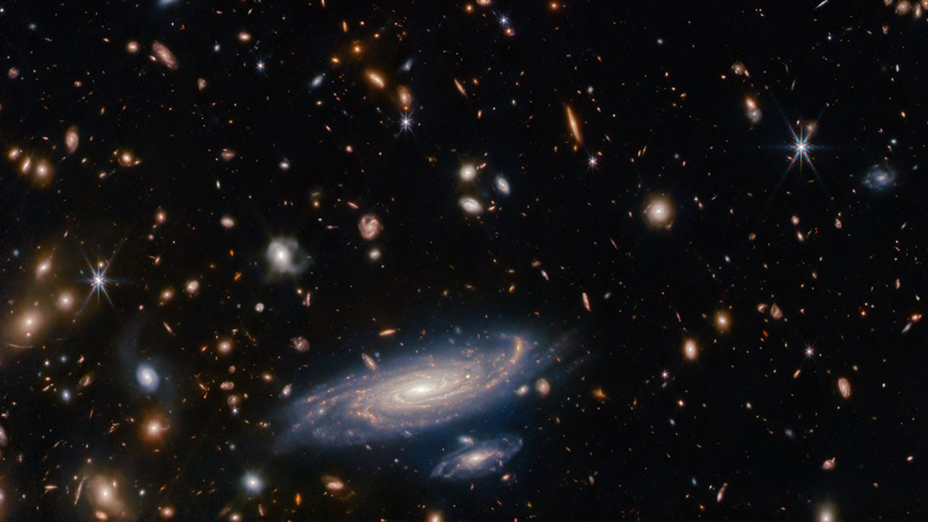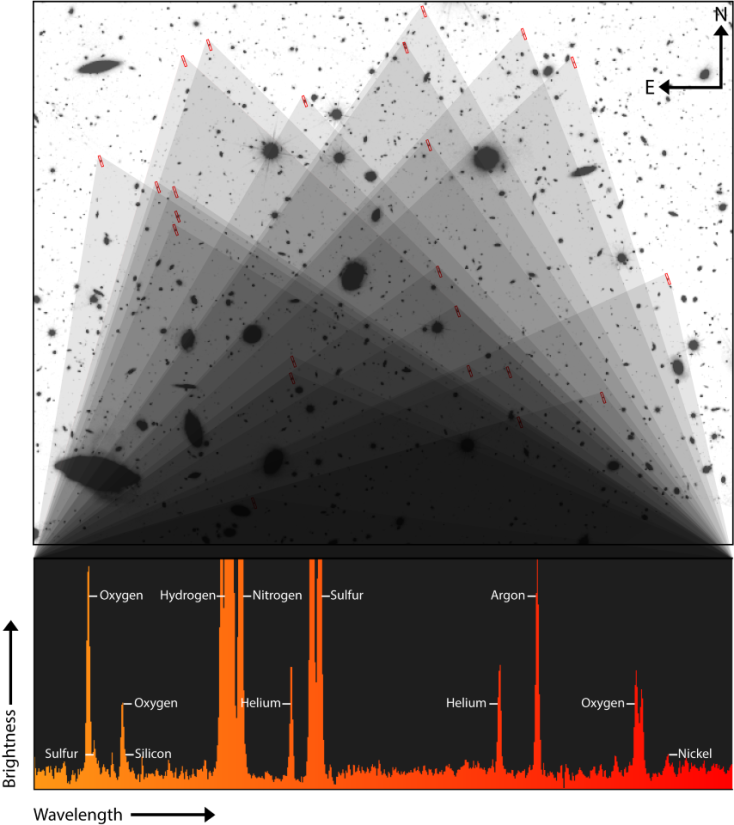Distant 'teenage galaxies' surprise astronomers with unexpected heavy elements
These galaxies appear to be far hotter than expected as well.

The deeper we look into space, the further back in time we see. Light emanating from some of the younger galaxies in our universe has to travel for billions of years to reach us, getting picked up by our instruments, rich with information from the cosmic dawn. And not only can this light tell us where we have come from, but where we might be headed.
To understand the evolution of several of these early universe, "teenage" galaxies, a Northwestern University-led team of astrophysicists have inspected data from the James Webb Space Telescope (JWST), which gazed back to realms that formed just two-to-three billions years after the Big Bang.
The observations have thrown up some intriguing surprises.
Specifically, the team analyzed results from the Chemical Evolution Constrained using Ionized Lines in Interstellar Aurorae (CECILIA) Survey to find that, not only do these galaxies appear hotter than expected, but they also seem to host heavy elements, like nickel.
Related: The James Webb Space Telescope catches distant young galaxy devouring its neighbors
The researchers focused on 33 distant galaxies for a continuous 30 hour period. They then combined wavelengths of light collected from 23 of those galaxies to create a composite picture of what's happening in these structures — these spectra contain clues regarding things like their average temperatures and what elements might be lurking within.
"This washes out the details of individual galaxies but gives us a better sense of an average galaxy. It also allows us to see fainter features," Allison Strom, lead author of the study and assistant professor of physics and astronomy at Northwestern University, said in a statement.
Breaking space news, the latest updates on rocket launches, skywatching events and more!
The composite picture of the galaxies contained eight identifiable elements: Hydrogen, helium, nitrogen, oxygen, silicon, sulfur, argon and nickel. While the lighter elements were expected, the presence of nickel, which is heavier than iron in the periodic table, came as somewhat of a surprise.
"Never in my wildest dreams did I imagine we would see nickel," Strom said.
Even in older, nearby galaxies, nickel rarely is observed — and that's after multiple life cycles of stars, meaning multiple rounds of supernovas, and the opportunity for heavier elements to synthesize and spread throughout the galaxy.
"No one ever talks about observing nickel. Elements have to be glowing in gas in order for us to see them. So, in order for us to see nickel, there may be something unique about the stars within the galaxies," Strom said.
Strom believes the higher observed temperatures in these early galaxies might be connected to their curious chemical composition somehow: "Ultimately, the fact that we see a higher characteristic temperature is just another manifestation of their different chemical DNA because the temperature and chemistry of gas in galaxies are intrinsically linked."
The study was published Nov. 20 in the journal The Astrophysical Journal Letters.

Conor Feehly is a New Zealand-based science writer. He has earned a master's in science communication from the University of Otago, Dunedin. His writing has appeared in Cosmos Magazine, Discover Magazine and ScienceAlert. His writing largely covers topics relating to neuroscience and psychology, although he also enjoys writing about a number of scientific subjects ranging from astrophysics to archaeology.

